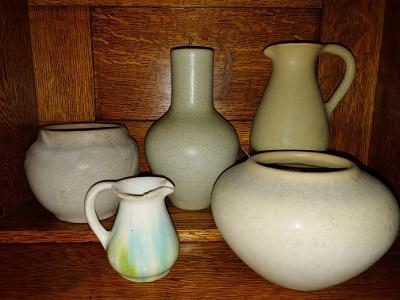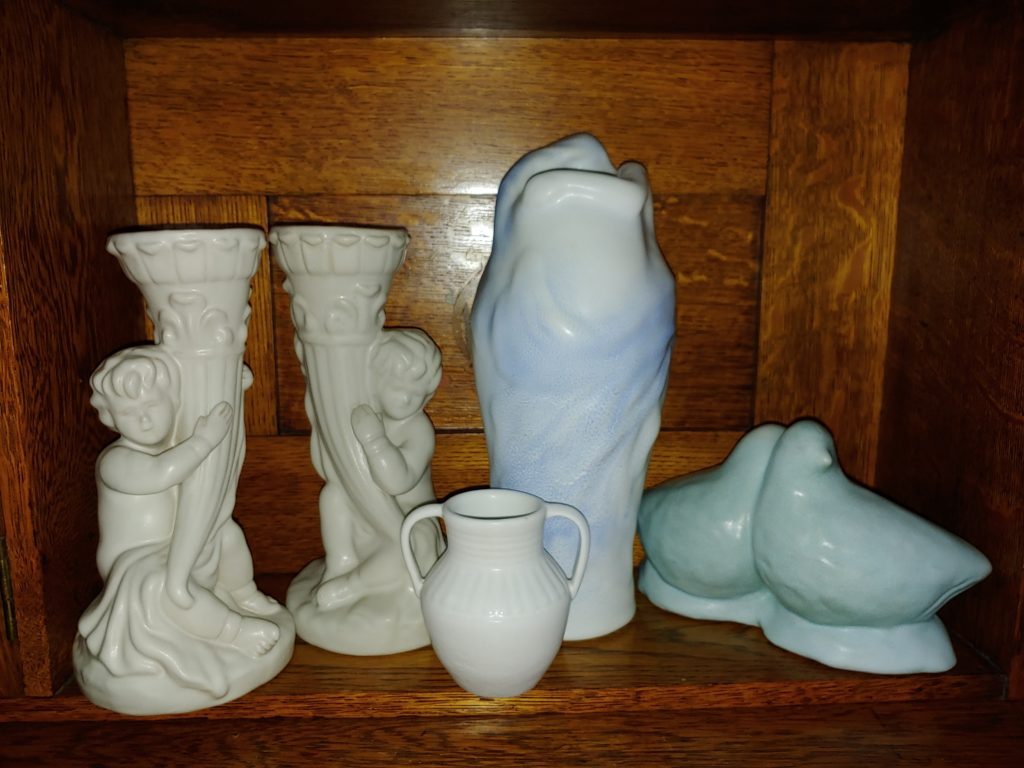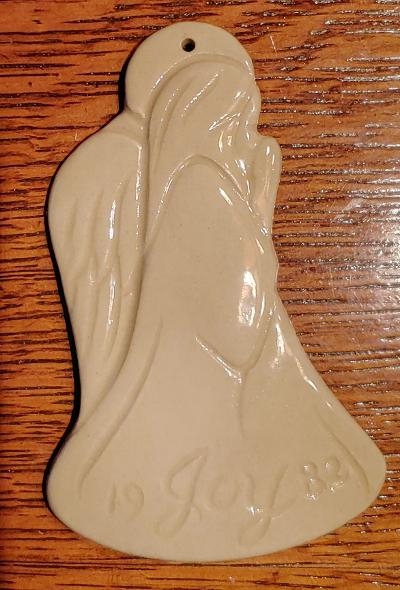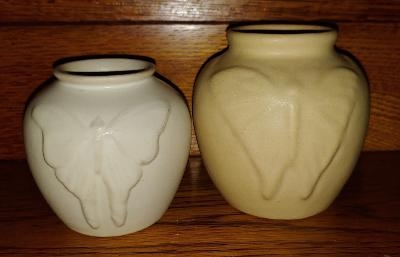Early Whites/Possible Light Grays, pre-1915

Front row Small pitcher in three colors, 1914 in high glaze; bowl, #109, 1906 with gray peppered glaze.
There were no color brochures during the very early years, to designate the name of each color glaze.
VAN BRIGGLE GLAZES: 1969-1988 June 2021 Jeff Stevenson

NARRATIVE BY JEFF STEVENSON, June 2021, Ceramic Engineer & Developer of Glazes 1969-1988
Moonglo: In 1978, the long-established Moonglo glaze began failing to adhere to the
clay during firing (this is known in glazing circles as “crawling”). This was a serious problem,
rendering most fired pieces unsalable. I began looking for a solution to the problem with the
current glaze, and also began developing an alternative white glaze, using the Russet glaze as
a starting point (with opacifying oxides replacing the brown colorant oxide blend). I came up
with the alternative glaze first, and we put that into production on Nov. 4, 1978. Here’s the
conclusion to the Research Summary Report I put together in January 1979 for our files:
The new Moonglo glaze has been very successful. It produces a very smooth finish with
a clean white color. Crawling is not a significant problem; the only significant problem
with the glare is a tendency to flow on the ware, leaving the edges of some of the ware
with a glaze covering which is thinner than desired. It would be desirable to increase
the viscosity of the glaze somewhat without altering the firing temperature.
Over the next few months, I made a few minor adjustments to eliminate the flow problem; this
improved version, which was placed into production on April 6, 1979, was still in use when I left
the pottery in late 1988.
Shortly after the new glaze was introduced, I found a fix for the original Moonglo, but by then
my dad had decided he preferred the new version (which was noticeably whiter than the
original Moonglo), so we stayed with that.
Moonglo Mist: At some point (1986?) we began the applying the same blue overglaze that we used for the Turquoise Ming to some of the new Moonglo pieces. I’ve seen sources that indicate that the Moonglo with blue overglaze was called Moonglo Mist. I don’t remember that, but it may well have been the case.
Iceberg: I’d forgotten about this one, but my brother Craig reminded me that, at some
point in the mid-1980s, some pieces dipped in Turquoise Ming were accidentally sprayed with
Moonglo. The result was deemed attractive, and was put into production as Iceberg.
NATURAL
Also developed by Jeff Stevenson, in 1978; a natural glaze that was used on specialty items, such as the Christmas Ornaments: “12 Days of Christmas”, which were designed by his brother, Craig Stevenson.

“Joy” Christmas Ornament by Craig Stevenson
BEIGE?

Left is a 2004 Moonglo #688. Right is what appears to be a larger size #688 in Beige? We have 3 of this larger size versions of #688. One is the 1916 Orange, one is Turquoise Ming, and this one. They all appear to be late teens to 1920s era. Perhaps someone was experimenting with glazes in late teens & early 1920s, using this design for their glaze trials?